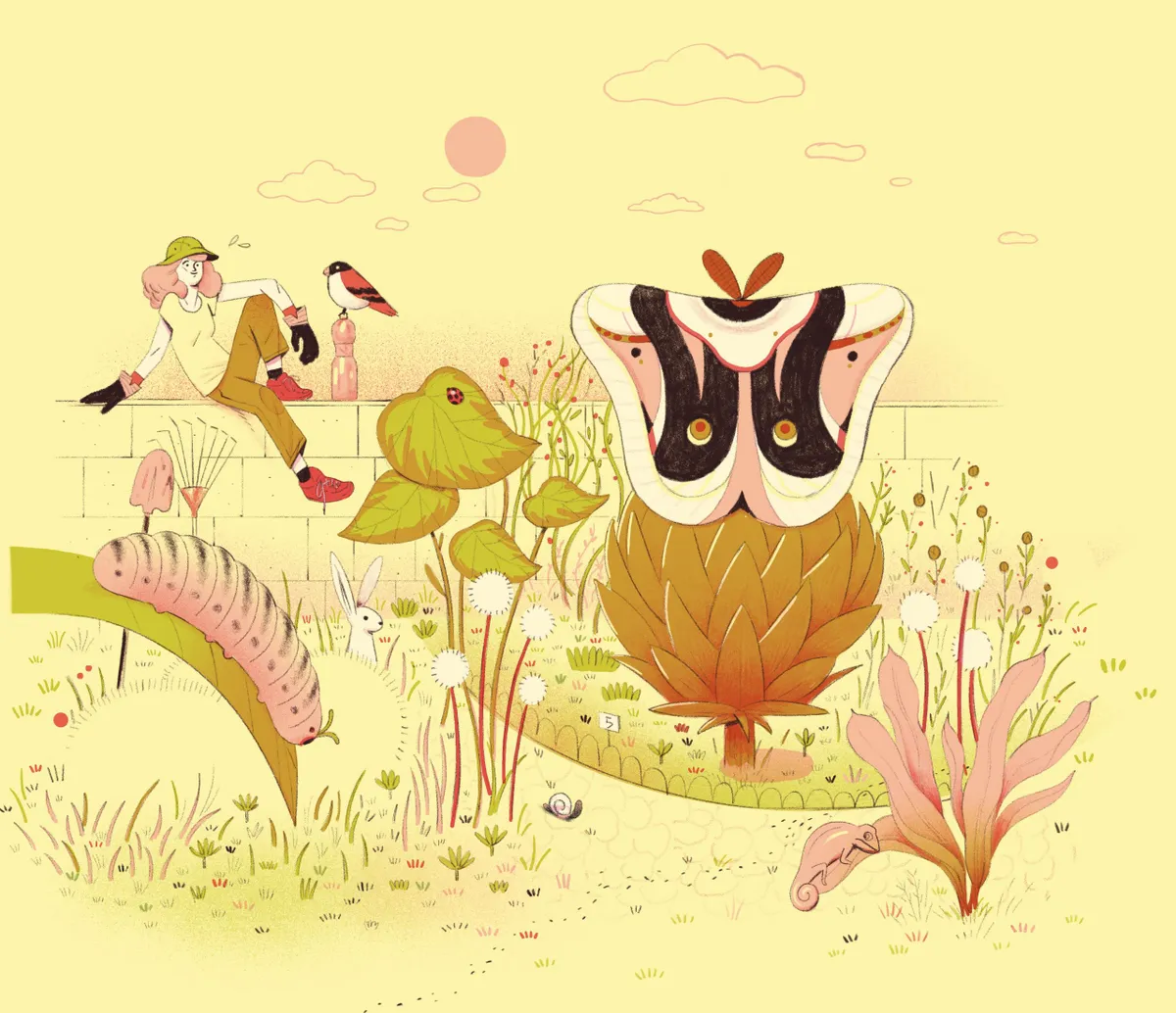Bugs are important
They are food for other creatures, such as birds, bats and fish. They provide services, like recycling dead bodies, keeping the soil healthy, and pollinating.
Three-quarters of the crops we eat rely on insect pollination. It’s been said that if insects were to vanish, the environment would ‘collapse into chaos’. I think that’s true.
Everyone can do something
The UK has half a million hectares of garden. That’s a bigger area than all of our nature reserves. It doesn’t take much to make your patch more wildlife friendly.
Need to know...
- Be lazy – let plants go to seed to provide food for birds, and give the mower a rest to attract pollinators.
- Old-fashioned cottage flowers and herbs are a magnet for insects.
- Squeeze in a pond. Even an old basin sunk into the ground will attract dozens of species.
Plant the right flowers
Some flowers, like the classic tea rose, may be pretty, but don’t offer much to pollinators. Old-fashioned cottage flowers and herbs, like catmint and comfrey, are much better.
In my own garden, I have lots of wildflowers like bird’s-foot trefoil, pink campion and teasels, mixed in with ornamental flowers.
Plant for year-round colour
Aim for continuity of flowering for as much of the year as you can, so that, for example, bumblebees have got food right through from when the queens come out in March to when the nests fizzle out in September.
Try to cater for different insects. Bees with long tongues like flowers such as foxgloves and honeysuckle; short-tongued species prefer things like geraniums and cotoneasters.

Give the mower a rest
Most lawns contain wildflowers like clovers and dandelions, but they never get the chance to bloom because they’re constantly being mown down. These flowers are really good for pollinators.
I’d love it if we could get people to move away from this idealised Wimbledon-style lawn to something more meadow-like.
Many garden centres aren’t that ‘green’
Bedding plants are reared in peat-based compost in disposable plastic pots and have almost certainly been sprayed with pesticides. We did some research recently and found that 75 per cent of plants being sold as ‘bee-friendly’ had insecticides in them, so you could be buying them and poisoning bees.
To avoid this, buy from organic garden centres, grow from seed, or plant swap with neighbours. Plus, 90 per cent of garden composts contain peat. Peat comes from peat bogs, which are rare habitats with lots of wildlife. They’re also big stores of carbon. It’s frustrating, as alternatives are available.
Read more about bees:
- Samantha Alger: What can we do to save the bees?
- When bees can’t see, the humble bumble can make do with a fumble
- Five fascinating facts about bees
Don’t despair if you don’t have a garden
If you have a balcony, then grow plants like marjoram and thyme in pots. Even in a city, the bees will sniff them out. You can still have a bee hotel. Or take part in community initiatives, like sowing wildflowers in public spaces.
- This interview first appeared in issue 351 of BBC Science Focus Magazine - find out how to subscribe here